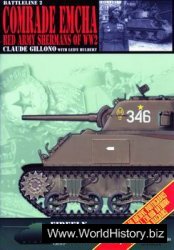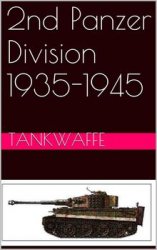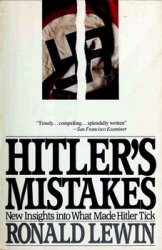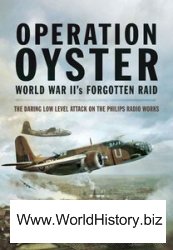Few stories about the Civil War carry more emotional importance for African Americans than the assault on Fort Wagner, Morris Island, South Carolina, on July 18, 1863. The assault was led by the 54th Massachusetts Colored Volunteer Infantry Regiment under the command of 26-year-old Col. Robert Gould Shaw. Like many massed infantry charges, it failed, and the soldiers fell back after suffering heavy losses. But the courage of the 54th’s African-American troops and the heroic death of Colonel Shaw made the regiment instantly famous, and its history is the subject of poems, songs, books, documentaries, and a movie. Augustus Saint-Gaudens, a well-known American sculptor, designed a beautiful monument to honor the regiment that was unveiled in Boston in 1897. Ralph Waldo Emerson wrote a poem that is inscribed on the monument’s granite base: “So nigh is grandeur to our dust, So near to God is man, When Duty whispers low, THOU MUST, The youth replies, I can.”
The origins of the 54th lie with Massachusetts’s wartime abolitionist governor, Republican John A. Andrew. His dream was to see Aerican-American regiments in battle, fighting for their rights as citizens and their dignity as men. He wanted to prove wrong the commonly held stereotype of black incapacity to train and fight as soldiers. Andrew had plotted and agitated for an all-black regiment from the beginning of the war, to no avail for nearly two years. But finally the Emancipation Proclamation, issued on January 1, 1863, made the enrollment of African-American soldiers possible. The majority of African-
American regiments were organized under the auspices of the federal government and were called the United States Colored Troops. Three colored regiments, however, were raised in the same fashion as the majority of white regiments, that is, by state. Two were from Massachusetts and one was from Connecticut. The 54th was the first of the three.
In early January 1863 Andrew received permission from President Abraham Lincoln and Secretary of War Edwin Stanton to raise an all-black Northern regiment from men living in the Bay State. For the officers, Andrew was required to choose white men only. Lincoln had refused his request to commission black officers in fear that Northern public opinion would not support that advancement. Andrew was disappointed but did what he thought was the next best thing: He recruited officers with an antisiAVERY background. “Such officers,” Andrew explained, “must be necessarily gentlemen of the highest tone and honor; and I shall look for them in those circles of educated Anti-Slavery Society, which next to the colored race itself have the greatest interest in the success of this experiment.” True to his words, Andrew offered the colonelcy of the regiment to Bostonian Robert Gould Shaw of the Second Massachusetts, with the lieutenant colonelcy going to a captain of the 20th Massachusetts, Norwood Hallowell of Philadelphia. Both were sons of prominent abolitionist families. Other white officers included Lts. Edward Emerson and Wilkie James and Capts. Luis F. Emilio and Cabot Russel.
It soon became clear that Massachusetts alone could not begin to fill the regimental requirement for 1,000 men. Andrew formed a committee of concerned citizens, headed by George L. Stearns, a wealthy Boston industrialist, to raise money for the hiring of speakers who would travel across the North to recruit for the regiment. Andrew needed the wholehearted support of the black Northern leadership for this task, and he received it. William Wells Brown, John Mercer Langston, Martin R. Delany, Robert Purvis, Henry Highland Garnet, and Frederick Douglass all persuaded men from the tiny Northern population of free African Americans to become Union soldiers. In a stirring speech, Douglass explained to his audiences why African Americans should fight in what had previously been a white man’s war: “Once let the black man get upon his person the brass letters, U. S., get an eagle on his button and a musket on his shoulder and bullets in his pocket; and there is no power on the earth or under the earth which can deny that he has earned the right of citizenship in the United States.” The recruiters had other, more tangible, rewards to offer, namely a generous bounty, $8-per-month salary from the state, and $13-per-month salary from the federal government, the same as for white soldiers.
By February 1863, volunteers were pouring into the 54th’s training camp in Readville, near Boston. The bulk

The 54th Massachusetts Colored Volunteer Infantry Regiment fighting on Morris Island, where their heroic actions in battle helped dispel skepticism in those who believed that African Americans could not be good soldiers (The National Guard Heritage)
Of them hailed from Massachusetts, Pennsylvania, New York, Ohio, Michigan, Illinois, and Indiana. There were more than 1,000 men; the rest filled up the ranks of the 55th Massachusetts Colored Regiment. The men of the 54th represented the cream of the black Northern society. Most could read and write, and many were married with families. They were barbers, cooks, teamsters, farmers, laborers, and students. Pennsylvanian George E. Stephens was a cabinetmaker, while Joseph Sulsey from New Jersey was a dentist. The vast majority of enlisted men in the 54th were working class. More than a quarter were born into slavery, and their average age was 24. Several men achieved distinction as noncommissioned officers. One of the two sons of Frederick Douglass who volunteered for the 54th was Sgt. Maj. Lewis Douglass, the highest-ranking noncommissioned officer in the unit. Sgt. William H. Carney of New Bedford, Massachusetts, won the congressional Medal of Honor for his courage in rescuing the regimental flag at Fort Wagner, and Sgt. Robert J. Simmons of New York was also cited for his bravery in that battle.
The young men in the 54th naturally shared a sense of pride in themselves and their mission, which was to serve as an example for all other black units. No expense was spared for the 54th. They received unieorms, shoes, rifles, and a great deal of training. Although difficult and sometimes discouraging, the effects of discipline and daily drill made the 54th come together as a group. Thousands flocked to view their dress parades, which demonstrated the capability of the black man to be a soldier. There was great disappointment in the ranks when the federal government went back on its promise to pay African-American soldiers equally for their service. White soldiers received $13 per month in addition to clothing; black soldiers received $10 per month, from which they were expected to deduct $3 for clothing. Most of the enlisted men in the 54th refused to accept their pay until Congress corrected the injustice in early 1865.
After several months of training, orders arrived in May 1863 requiring the 54th Massachusetts to report to Maj. Gen. David Hunter, commander of the Department of the South, in Hilton Head, South Carolina. Before they left, a huge parade was held in honor of the 54th in Boston. In his parting words, Governor Andrew said “I know not. . . when, in all human history, to any given thousand men in arms there has been committed a work at once so proud, so precious, so full of hope and glory as the work committed to you.” From the Boston Harbor, the men of the 54th sailed down to the South Carolina seacoast and disembarked at St. Simons Island. The regiment was to take part in a movement of Union forces to seize Fort Sumter, South Carolina, and conquer Charleston, where the rebellion had begun. Eager to participate in combat action, the men of the 54th were instead relegated to labor duties as May turned into June and July. Col. Robert Gould Shaw was furious and began a letter-writing campaign to members of his influential family, who in turn, forwarded his letters to President Lincoln and other major political leaders. For Shaw, the reputation of black units would be irreparably harmed if the flagship regiment did not experience combat, and soon.
Finally, on July 16, 1863, three companies of the 54th were ordered to proceed to nearby James Island, where they met, fought, and defeated a much larger Confederate force. Exhausted but extremely proud, the men, now joined by the rest of the regiment, marched straight to Morris Island, the site of battery Wagner, one of the forts that offered protection to Charleston. Arriving with their colonel on the morning of July 18, the men of the 54th learned that heavy federal artillery had been shelling Fort Wagner for hours. Wrongly assuming that the Confederates within the battery were wounded, killed, or demoralized, the Union commander planned an assault for that evening. Colonel Shaw reported for duty and was asked by the commanding general if the 54th would consider leading the infantry charge. Shaw did not hesitate in accepting and was pleased that the good fighting reputation of his men had already reached the general’s ears. “I trust God will give me the strength to do my duty,” he confided to a friend.
Shaw positioned his regiment at the front of the line, and as they marched up the shore the men were cheered loudly by thousands of Union soldiers who were to follow them in battle. Shaw made a speech in which he told the soldiers to “prove themselves as men.” The signal to begin the charge was given, and Colonel Shaw led the 54th to the top of the fort, where an enemy bullet killed him. Nearly half of the regiment made it inside the fort, and the soldiers outside held their ground for over an hour. Shortly after, the Federals were forced to withdraw, paying a heavy price for the failed assault. Seventy-five men of the 54th died at the battle of Fort Wagner, including Shaw and two other officers; overall the unit’s casualty rate was 272 out of 650 men. Total Union losses were also severe: 1,505 dead, wounded, or captured, while the Rebels lost 174 men. Charleston was not captured until the end of the war.
The performance of the 54th was widely covered by the Northern press. All agreed that Colonel Shaw and his men, both officers and enlisted, had conducted themselves with an impressive display of courage and daring. Overnight, the regiment became a powerful symbol for African-American manliness and readiness for citizenship. After Fort Wagner, the men of the 54th Massachusetts were used in campaigns in Florida, most notably the Battle of Olustee, waged in early 1864. In total, they fought in four battles and several skirmishes. When the war ended, a little over half of the regiment returned to Boston. The men of the 54th happily resumed their normal lives, confident that they had fulfilled the bright promise of the regiment envisioned by Governor Andrew and others. veterans of the 54th commemorated their wartime achievements by voting Republican, and many joined the Grand Army of the Republic. The fight for justice and equality for African Americans was not by any means secured after the Civil War, but the soldiers of the 54th Massachusetts Colored Regiment advanced the cause considerably.
See also aboltion; Corps d’Afrique.
Further reading/viewing: Russell Duncan, Where Death and Glory Meet: Colonel Robert Gould Shaw and the 54th Massachusetts Infantry (Athens: University of Georgia Press, 1999); Luis F. Emilio, A Brave Black Regiment: History of the Fifty-Fourth Regiment of Massachusetts Volunteer Infantry, 1863-1865 (New York: Da Capo Press, 1995); Glory (Los Angeles: Tristar Pictures, 1989); Robert Gould Shaw, Blue-Eyed Child of Fortune: The Civil War Letters of Colonel Robert Gould Shaw (Athens: University of Georgia Press, 1992); Joan Waugh, “A Sacrifice We Owed: The Shaw Family and the Fifth-fourth Massachusetts,” in Hope and Glory: Essays on the Legacy of the Fifty-fourth Massachusetts Regiment, eds. Marvin H. Blatt, Thomas J. Brown, and Donald Yacovone (Amherst: University of Massachusetts in association with the Massachusetts Historical Society, 2000).




 World History
World History









